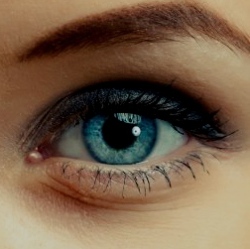
People who need vision correction have an extra concern to deal with when it comes to virtual reality. Virtual-reality headsets tend to leave some space in front of the wearer’s eyes that could squeeze in a pair of glasses, but it’s uncomfortable and can interfere with the quality of images on the screen.
With that in mind, EyeNetra, a startup whose smartphone-aided gadgets can deduce your eyeglass prescription without the need for bulky machines usually found in an eye doctor’s office says it’s working to figure out how its technology can yield prescriptions for virtual-reality headsets.
Headset makers could then use those prescriptions to swap out the lenses in their headset or perhaps modify the images the wearer sees in accordance with his vision. The hope is to make it easier and more comfortable for the millions of people who wear glasses to experience virtual reality, which is expected to become increasingly popular in the coming years.
Virtual-reality technology has developed quickly over the last several years, with money pouring in to support the development of headsets and games and other content to view on these devices. A number of virtual-reality headsets are slated for release in the near future: Facebook-owned Oculus plans to release its Rift headset in the first quarter of next year, and a new version of Samsung’s Gear VR headset, which was developed with Oculus and relies on a Samsung smartphone as its display and computer, will be available in November.
EyeNetra recently began putting together a prototype that is essentially a retrofitted version of the company’s existing Netra device, a handheld headset that relies on a smartphone to judge your refractive error, which refers to an inability to focus light due to the shape of the eye (to judge this, a user holds a Netra up to his eyes and uses knobs to align images he sees on the screen, and software helps decide the results).
For the prototype, says EyeNetra cofounder and chief technology officer Vitor Pamplona, EyeNetra is trying to combine the Netra’s ability to conduct a refractive test with a virtual-reality display that can take resulting data about your focusing weaknesses and adjust the images you see on the display.
Ramesh Raskar, the company’s cofounder and chief scientist as well as an associate professor at the MIT Media Lab, says the company also has some relationships with virtual-reality headset makers (none of which he would name) that he hopes will lead to them using EyeNetra’s technology to measure users’ refractive error. They could then simply switch out the lenses in the headset with an appropriate pair.
Raskar notes that determining your virtual-reality prescription may be a bit different from figuring out your eyeglasses prescription, since eyeglasses typically aim to show you what’s right in front of you with the most clarity. VR headsets will want to offer a wider field of view that may wrap around the face.
Also, unlike with an eyeglasses prescription, Pamplona says, it won’t be necessary for an optometrist or ophthalmologist to write one for correcting your vision in virtual reality, since unlike eyeglasses, the headsets aren’t considered medical devices.
